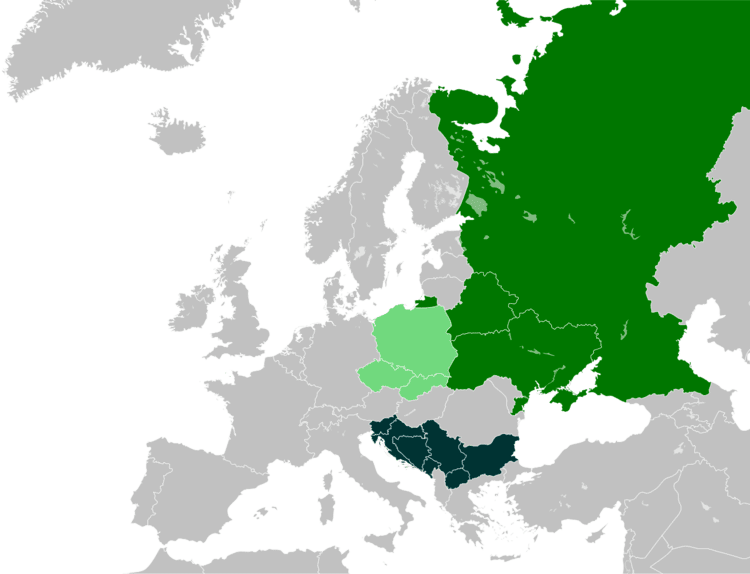 | ||
The West Slavs are a subgroup of Slavic peoples who speak the West Slavic languages. They separated from the common Slavic group in c. the 7th century, and establish independent polities in Central Europe by the 8th to 9th centuries. The West Slavic languages diversify into their historically attested forms during c. the 10th to 14th centuries.
Contents
West Slavic speaking nations today include the Czechs, Slovaks, Poles, Kashubians, Silesians and Sorbs. They inhabit a contiguous area in Central Europe stretching from the north of the Baltic Sea to the Sudetes and the Carpathian Mountains in the south, historically also across the Eastern Alps into the Apennine peninsula and the Balkan peninsula.
The West Slavic group can be divided into three subgroups: Lechitic, including Polish, Kashubian and extinct Polabian and Pomeranian languages, Lusatian (Sorbian) and Czecho-Slovak. Culturally, West Slavs developed along the lines of other Western European nations due to affiliation with the Roman Empire and Western Christianity. Thus, they experienced a cultural split with the other Slavic groups: while the East Slavs and most South Slavs converted to Orthodox Christianity, thus being culturally influenced by the Byzantine Empire, the West Slavs converted to Roman Catholicism, thus coming under the cultural influence of the Latin Church.
History
In the Middle Ages the name "Wends" (derived from Roman-era Veneti) was applied to Western Slavic peoples. Mieszko I, the first historical ruler of Poland, also appeared as "Dagome, King of the Wends".
The early Slavic expansion began in the 5th century, and by the 6th century, the groups that would become the West, East and South Slavic groups had probably become geographically separated. The first independent West Slavic states originate beginning in the 7th century, with the Empire of Samo (623–658), the Principality of Moravia (8th century–833), the Principality of Nitra (8th century–833) and Great Moravia (833–c. 907). The Sorbs and other Polabian Slavs like Obodrites and Veleti came under the domination of the Holy Roman Empire after the Wendish Crusade in the Middle Ages and had been strongly Germanized by Germans at the end of the 19th century. The Polabian language survived until the beginning of the 19th century in what is now the German state of Lower Saxony. At this time only 60,000 Sorbs have survived, living predominantly in Lusatia, a region in modern Germany in the states of Brandenburg and Saxony.
The central Polish tribe of the Polans created their own state in the 10th century under the Polish duke Mieszko I. For many centuries Poland has had close ties with its western neighbors, with the Polish ruler Bolesław I the Brave declared by Holy Roman Emperor Otto III as Frater et Cooperator Imperii ("Brother and Partner in the Empire").
The precursors of the Czechs (i.e. Bohemians) migrated into Bohemia in the late 6th century and had established various fiefdoms by the 10th century when their rulers eventually became vassals (1002) of the Holy Roman Emperors. Kingdom of Bohemia stayed part of that Empire between 1002–1419 and 1526–1918. Predecessors of Slovaks came under Hungarian domination after 907 (doom of the Great Moravia) – together with other Slavic groups as Croats, Slovenians, Dalmatians and Rusyns. Both the Czechs and the Slovaks were under rule of the Habsburg monarchy from 1526 to 1804; then in the Austrian Empire and between 1867–1918 part of Austria-Hungary.
Tribal groups
Bavarian Geographer
In 845 the Bavarian Geographer made a list of West Slavic tribes who lived in the areas of modern-day Poland, Czech Republic, Germany and Denmark:
